When I first arrived in Oviedo, up in northern Spain, the city’s graceful streets and relaxed vibe pulled me right in. There’s an easy elegance here—refined but never stuffy.
Oviedo’s charm and its walkable streets made exploring feel both effortless and special. Honestly, I ended up loving it more than anywhere else I’ve visited in Spain.
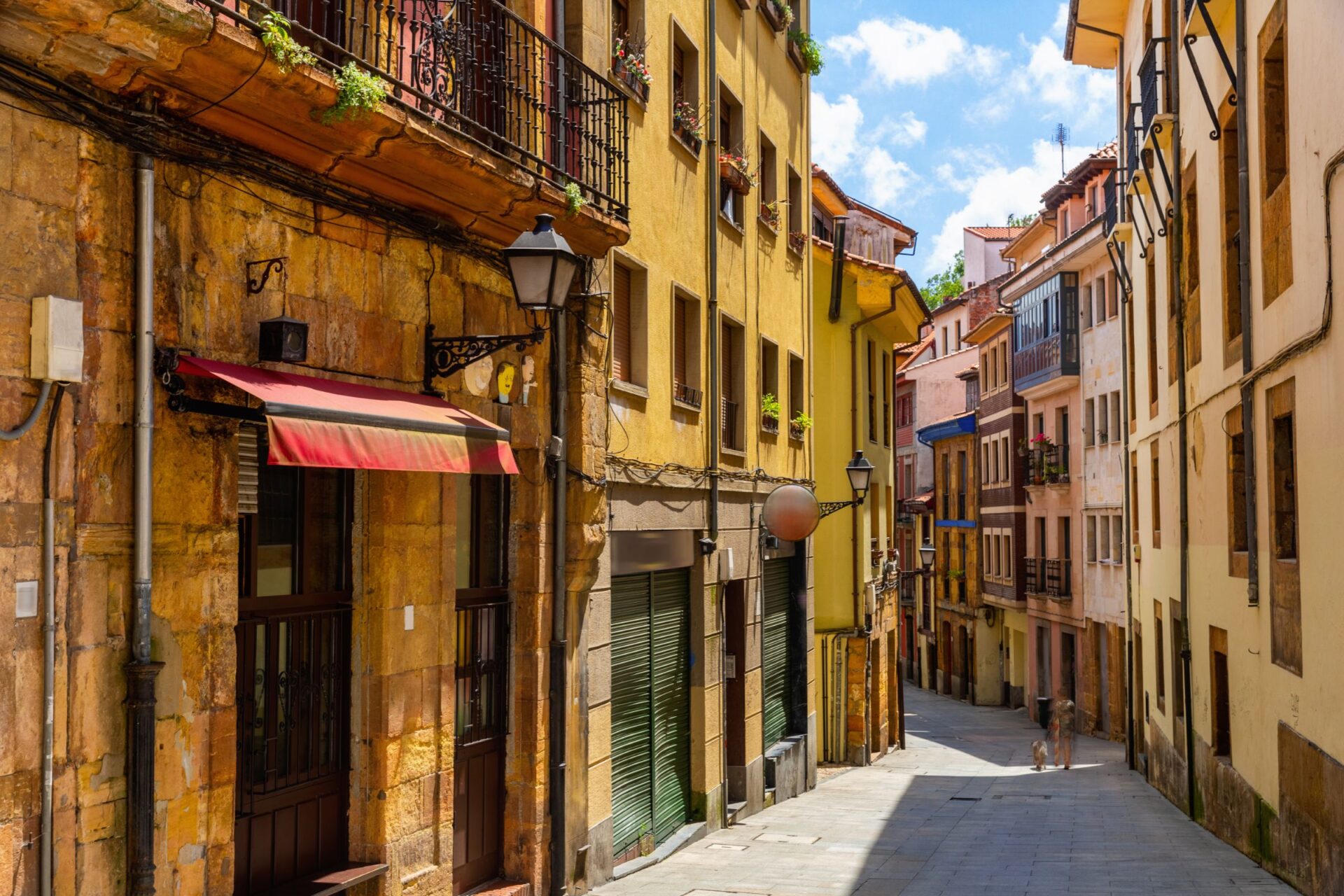
As I wandered, Oviedo felt like a living gallery. Public art and statues popped up along narrow roads and in beautiful plazas. The medieval streets, lively cafes, and genuinely friendly locals created this unique mix of history and culture—without ever feeling crowded or overwhelming.
It was easy to soak up Spanish traditions, snack on local specialties, and just enjoy each moment as I meandered from shop to square.
Strolling Oviedo’s Walkable Historic Center
Walking through Oviedo, I realized right away how easy it is to get around on foot. Every corner brought something new—a bit of history, some beauty, a slice of daily life.
The city never felt too busy, but it was always lively enough to feel interesting.
Charming Streets and Squares
The historic center draws you in with its cobblestone lanes and cozy plazas. I loved seeing pastel facades and old shops mixed with modern boutiques and bakeries. Streets like Calle Cimadevilla really stood out.
Every turn seemed to lead to a picture-perfect square. Café terraces buzzed with people enjoying coffee or cider.
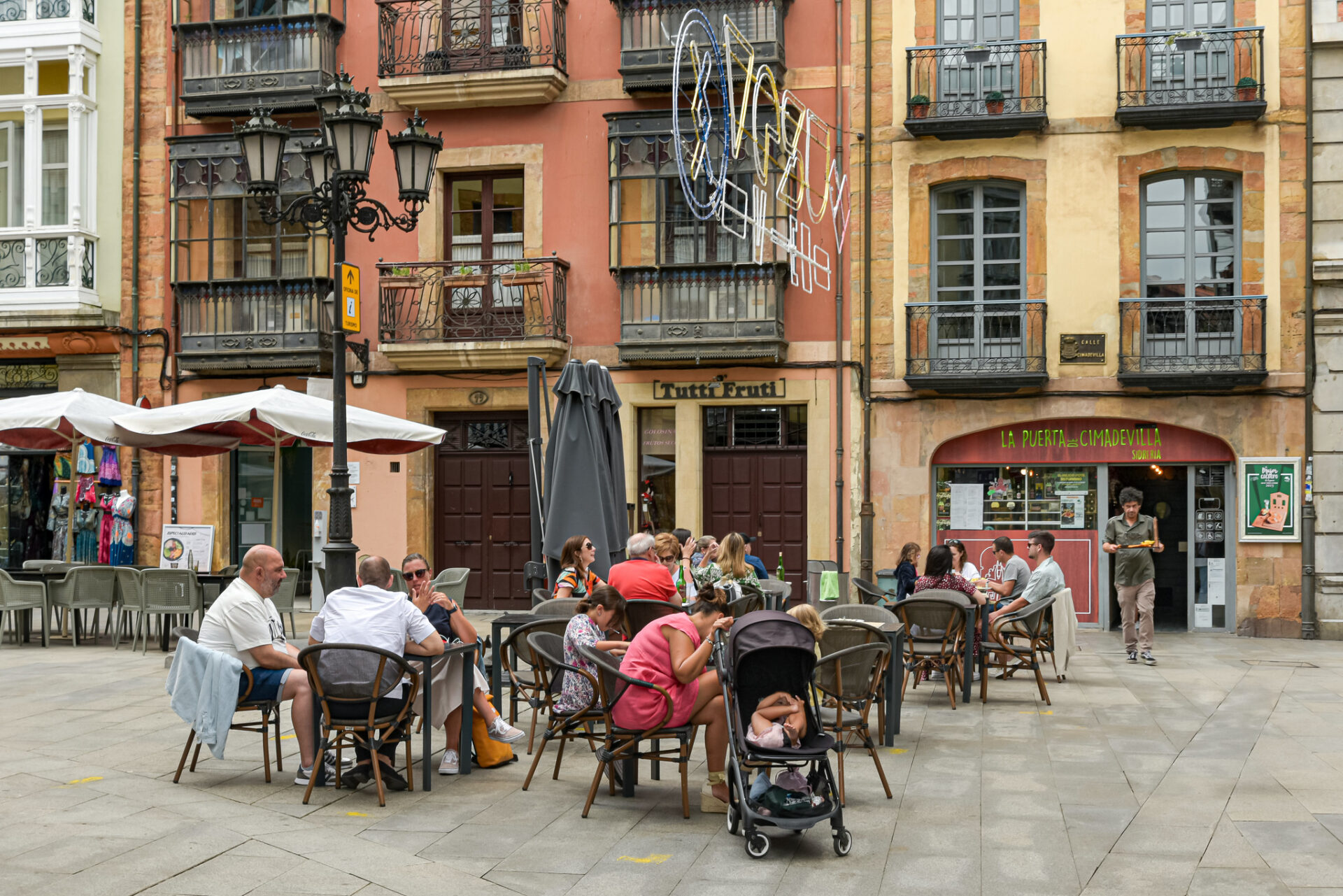
Image Source: Flickr
Highlights to Look For:
- Plaza del Fontán: Colorful buildings and fresh market stalls make this square a favorite.
- Plaza de la Constitución: Neoclassical buildings surround it—a great spot to people-watch.
- Calle Gascona: They call it “Cider Boulevard” for a reason—traditional cider houses line the street.
Benches and well-placed streetlights made evening strolls feel safe and cozy. The pedestrian-friendly layout means you probably won’t get lost, so you can just enjoy the city’s atmosphere.
Medieval City Walls and Landmarks
Some parts of Oviedo’s old city walls still stand, hinting at a time when the city was fortified. I often followed the line of these walls, picturing merchants and guards from centuries ago.
Stone gateways and remains offer real glimpses of medieval life here.
Notable Landmarks:
- La Regenta Statue near the cathedral, inspired by the classic Spanish novel that really captures Oviedo’s 19th-century spirit.
- Oviedo Cathedral (Catedral de San Salvador): The Gothic cathedral’s roots go back to the 8th century. It’s a big stop for Camino de Santiago pilgrims.
- Ancient city gates: You can still spot gates like Arco de San Vicente, marking what used to be the city’s heart.
As I walked through these spots, Spanish history felt close and alive.
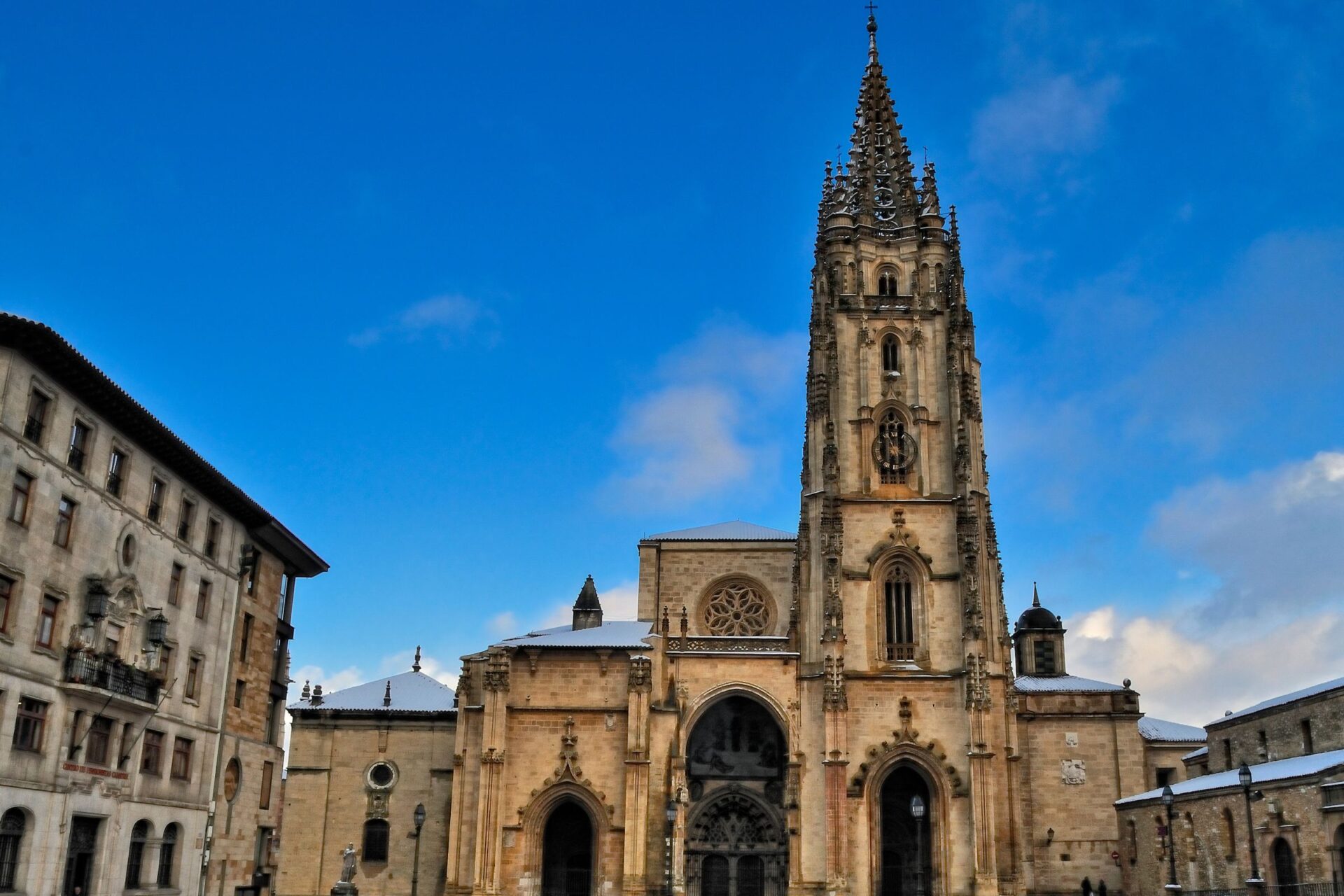
UNESCO World Heritage Sites
Oviedo has several early medieval churches that UNESCO recognizes as World Heritage Sites. I found these just outside the historic center, close enough for a pleasant uphill walk.
Santa María del Naranco and San Miguel de Lillo are the most famous, both from the 9th century.
These sites are pretty unique in Spain, with their Asturian pre-Romanesque style. They tell the story of Oviedo as an early capital of the Kingdom of Asturias.
Inside, you’ll see intricate carvings and stonework that reveal centuries of art and faith. I joined a guided tour, which really helped me appreciate the details and put the architecture in context.
Here’s a tip: Most UNESCO churches are open to the public, but check opening times before you go, especially in low season. The lawns outside are perfect for sitting and soaking up the view over Oviedo.
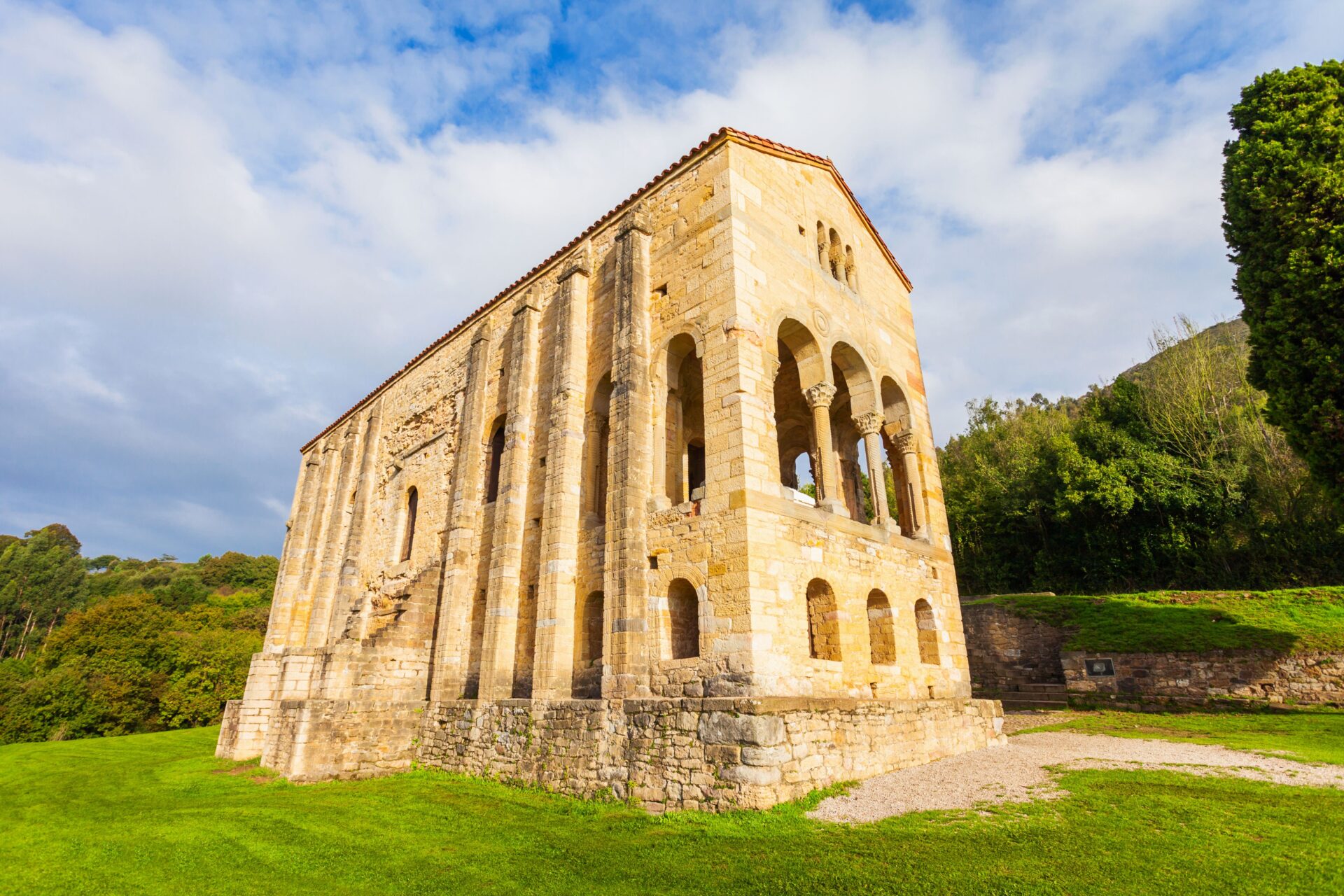
Architectural Elegance and Spanish Art
Oviedo’s city center feels like an open-air museum. Grand architecture, bold public art, and cultural treasures shape daily life here.
Every street offered up something beautiful or surprising. I found myself stopping often to admire old buildings or stumble across a bit of Spanish creativity.
Unique Spanish Architecture
The historic heart of Oviedo is packed with stately buildings, from Romanesque to Art Nouveau.
Oviedo Cathedral towers over the old town with its detailed Gothic spire. Inside, the Cámara Santa’s carved arches and relics feel ancient and mysterious.
Every narrow street seemed to open onto colorful facades and arcaded plazas with stone and wrought-iron balconies.
I couldn’t help but think about Alfonso XIII strolling these same boulevards. Even the newer buildings have a clean, Spanish flair that fits right in. The city’s elegant design makes wandering on foot feel natural and inviting.
Public Sculptures and Avant-Garde Installations
Sculptures are everywhere in Oviedo—way more than I expected. Bronze figures light up the parks and plazas.
I kept pausing beside famous statues like La Regenta, or the quirky Culis Monumentalibus (everyone takes a photo with that one).
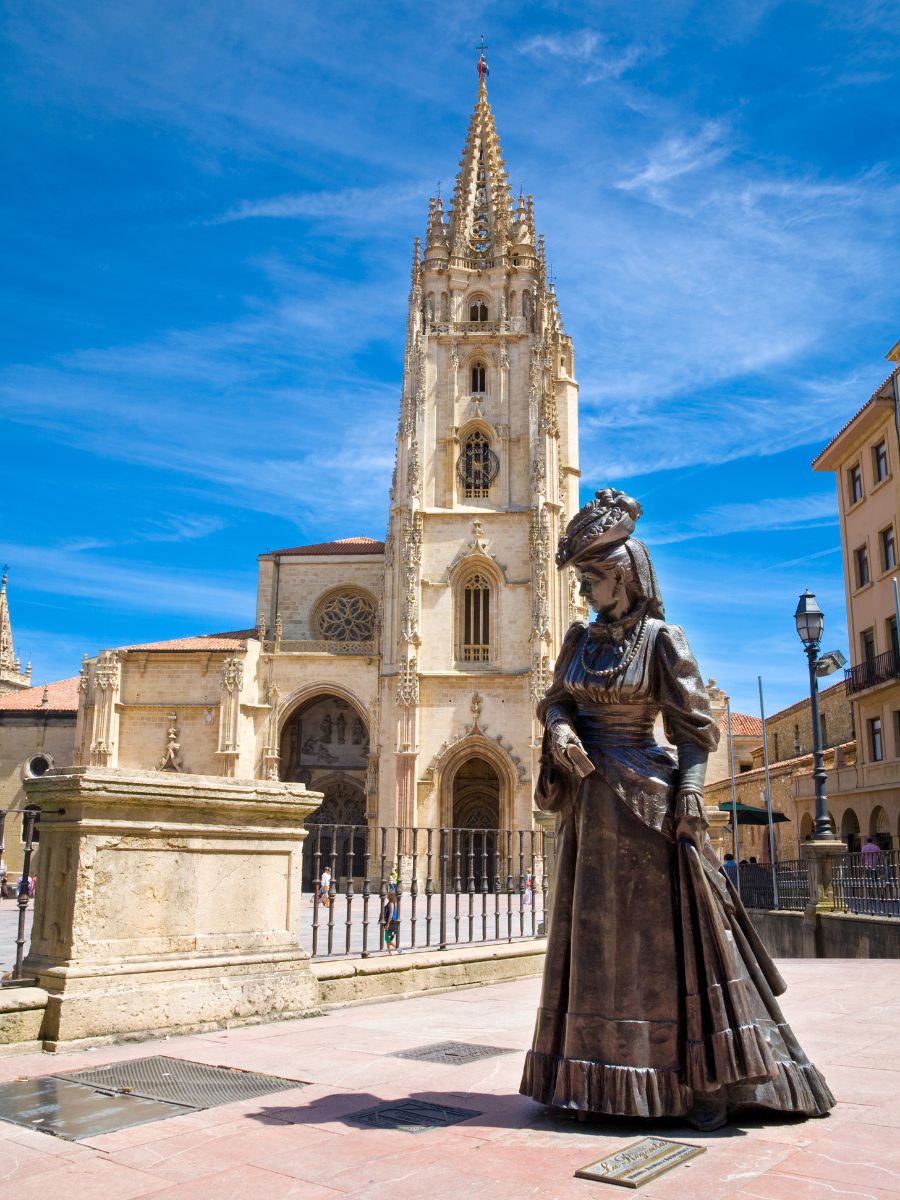
Oviedo also hosts the Parees Mural Festival. Contemporary murals add splashes of color in unexpected places. I loved finding street art that felt fresh and interactive, not just something to see in a gallery.
These installations made every walk feel lively and full of surprises.
Local Museums and Art
Oviedo’s museums are small but packed with Spanish art. I spent an afternoon at the Museo de Bellas Artes de Asturias—paintings by Goya, Velázquez, and Murillo hung next to local artists’ work.
While there’s no Picasso museum here, the collections give you a real sense of Spanish creativity. The galleries had lots of natural light and easy-to-read descriptions. Visiting these spaces gave me a deeper appreciation for Spanish culture and a break from the city’s buzz.
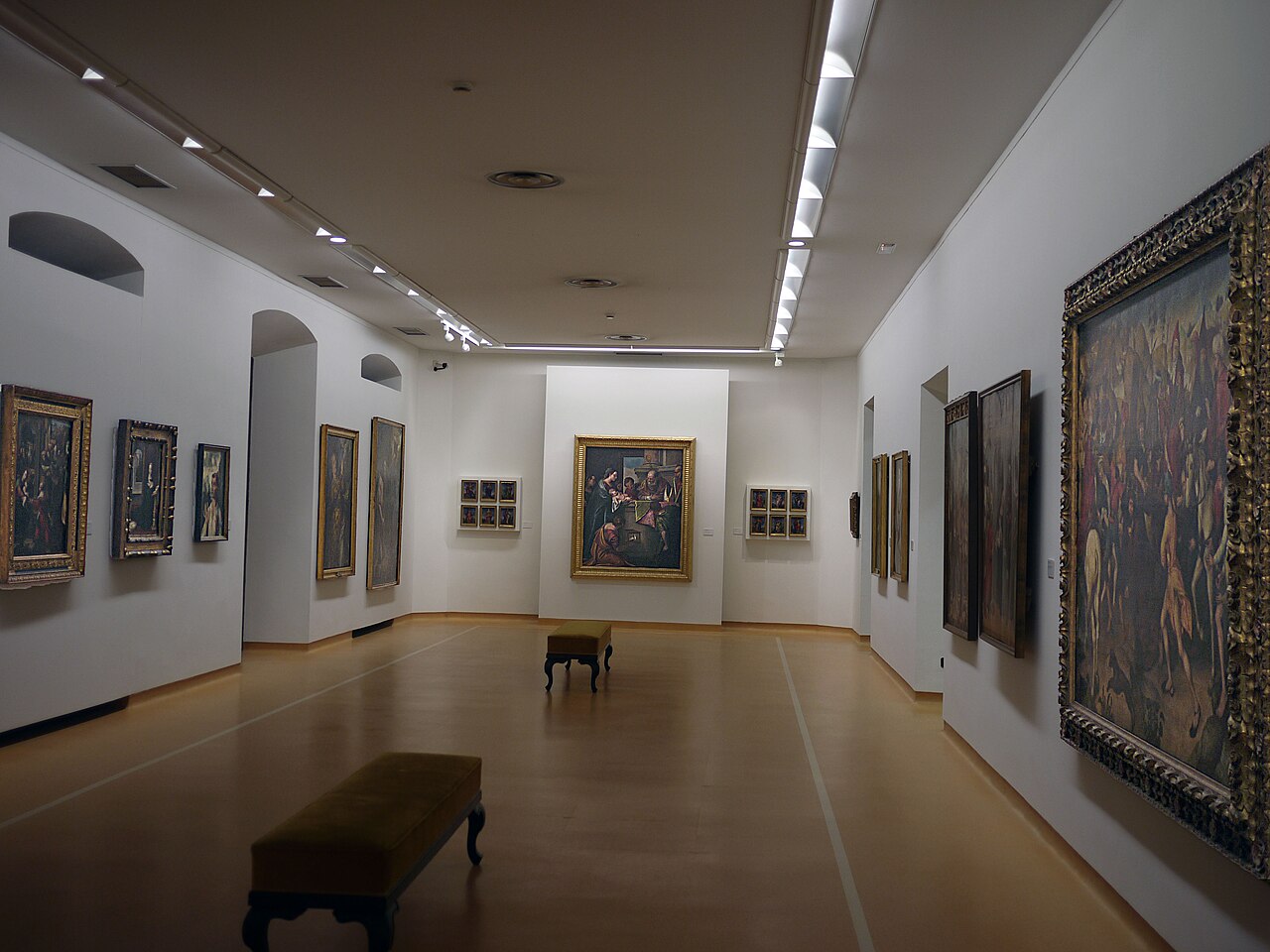
The Sophisticated Food Scene: From Tapas Bars to Elegant Cafés
Oviedo’s food scene hits a sweet spot between tradition and sophistication. The city’s full of lively tapas bars, stylish cafés, and markets serving up local flavors I still crave.
Tapas Culture and Must-Try Specialties
Every evening, locals and visitors fill the streets, hopping from bar to bar for Spanish tapas with cider or wine. Sharing small plates is just part of life here.
Each bar puts its own spin on classics. Cachopo—a breaded beef filet stuffed with ham and cheese—became a surprise favorite for me. Fabada asturiana, a rich bean stew, also showed up as a hearty tapa.
If you visit the Mercado Central, vendors offer up fresh cheeses and jamón. Sampling Asturian flavors before sitting down for a meal became a highlight of my mornings.

Best Tapas Bars and Pintxos Spots
Some of my best nights in Oviedo happened over pintxos—little snacks with toothpicks—while chatting with locals.
A few favorite tapas bars:
- El Raitán: Generous pintxos and an old-world vibe.
- La Genuina de Cimavilla: Creative tapas and relaxed outdoor seating.
- Casa Ramón: Go for the jamón ibérico and local cheeses.
If you want to dive in, wander Calle Gascona. Sidrerías (cider bars) line the street, perfect for sipping Asturian cider with your tapas. Prices are fair, and staff are happy to help you figure out the menu.
Traditional Tortilla Española and Local Gourmet Experiences
No matter how many times I ordered tortilla española (Spanish omelette), every café had its own take. Sometimes thick and runny, sometimes packed with onions or chorizo—it became my go-to for breakfast or a late snack.
Cafés like Café Dindurra and little bakeries serve slices fresh from the pan. I always tried to have mine with a coffee while people-watching.
For something fancier, some restaurants offer gourmet tasting menus built around regional ingredients—cider reductions, blue cheeses, wild mushrooms. These dishes really show off how creative Oviedo’s food scene can be.
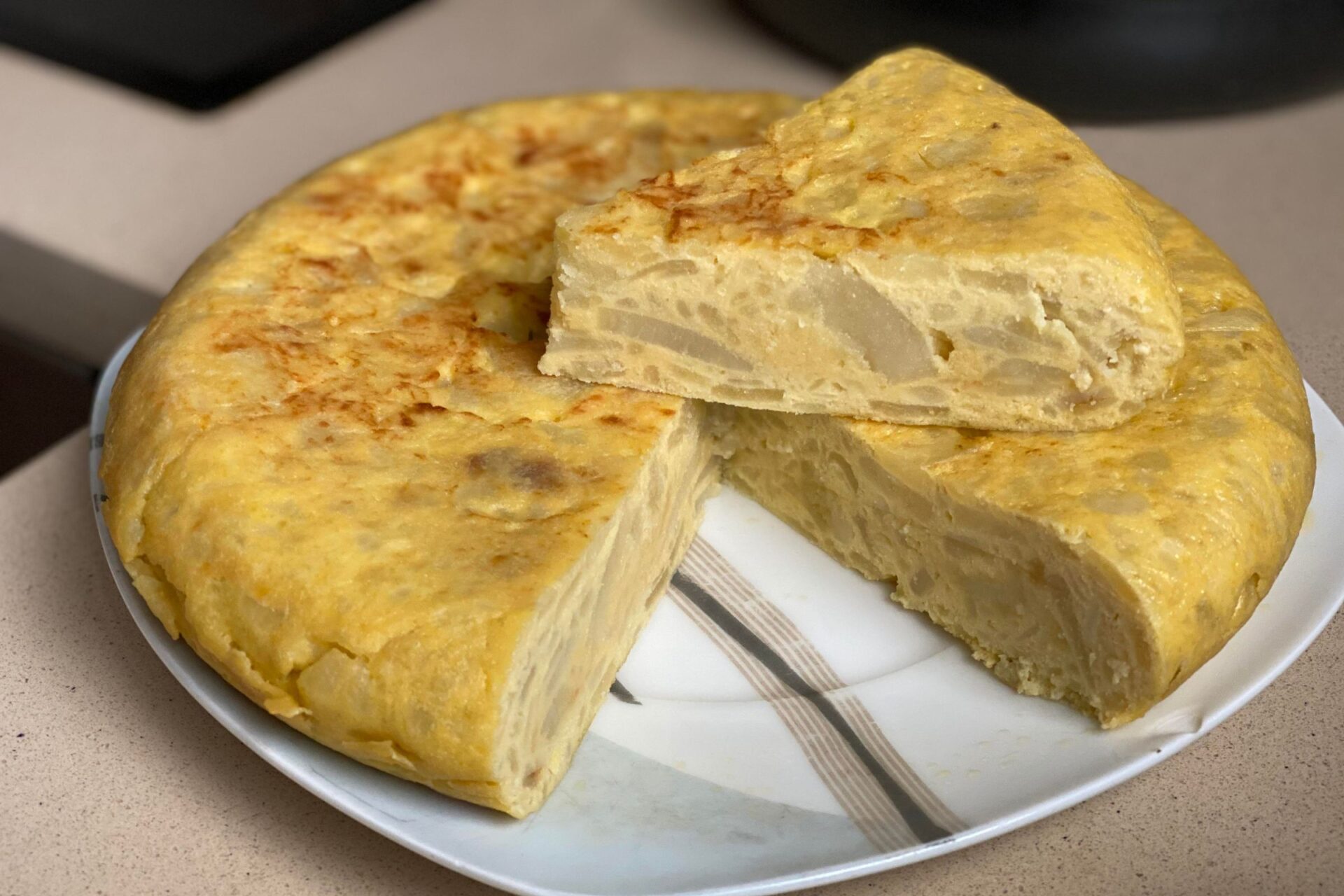
Why Oviedo Stands Out Among Northern Spain’s Gems
Nestled between lush hills and full of medieval charm, Oviedo blends art, walkability, and history in a way I haven’t found elsewhere.
The city feels peaceful and sophisticated, but never cold. It’s just different from other northern Spanish cities I’ve visited.
Comparing Popular Destinations
When I first explored northern Spain, places like San Sebastián and Bilbao grabbed my attention with their beaches and big museums.
But Oviedo isn’t about flashy attractions. Quiet streets, public art, elegant plazas, and beautiful buildings are everywhere.
Oviedo’s Old Town is smaller and easier to explore than most big cities. Sidewalk cafés fill Calle Gascona, and the gothic San Salvador Cathedral anchors the city. Unlike busier places, Oviedo never felt packed, so I could take my time and enjoy the sights.
What really sets Oviedo apart are its Pre-Romanesque churches—some of Spain’s oldest and most unique. Santa María del Naranco and San Miguel de Lillo, both UNESCO-listed, highlight the city’s deep history. Everything here feels approachable, from historic sites to modern tapas bars.
| Feature | Oviedo | San Sebastián | Bilbao |
|---|---|---|---|
| Walkability | High (compact, car-free zones) | Moderate | Moderate |
| Crowd Levels | Low-Medium | High | High |
| Historic Churches | Unique Pre-Romanesque sites | Fewer | Some |
Easy Access to Santiago de Compostela and Pontevedra
I really appreciated Oviedo’s location. Train and bus links make it easy to reach other famous cities in northern Spain. Santiago de Compostela, with its stunning cathedral and Camino pilgrims, is just a short trip away.

Trains are comfortable, with green landscapes and mountain views all the way. Pontevedra is close too, and its lively old town offers a fun change of scene.
If you’re into slow travel, Oviedo makes a great base for exploring the Galician coast. I managed to sip cider in Asturias and eat fresh seafood in Galicia—all in one trip.
Exploring Castile and León’s Rich Heritage
Oviedo sits in Asturias, but heading south brings you right into Castile and León, another region brimming with history. León is an easy train ride away, with its impressive Gothic cathedral and Roman ruins.
When I visited, I wandered quiet streets and admired stained glass windows that glowed in the sunlight.
Burgos, a bit farther, is worth the journey for its monasteries, castles, and medieval bridges. If you’re after a deeper dive into Spanish history, it’s easy to visit these cities from Oviedo without moving hotels.
Oviedo’s spot near these regions lets you experience traditional Asturian culture, Galician flavors, and Castile and León’s medieval wonders—all while enjoying a peaceful home base.

An Escape Rich in History, Style, and Inspired Travels
Oviedo has this quiet strength and a sense of style that seems shaped by its past and its ties across Spain and Europe. You can feel how the city draws inspiration from different places and moments, making it somehow both unique and familiar.
Influence of Spanish Civil War and Oviedo’s Resilience
When I walk Oviedo’s streets, buildings loom around me—these places survived bombings and fierce fighting during the Spanish Civil War. Squares like Plaza de Alfonso II almost whisper stories of bravery and rebuilding. They remind me of the city’s resilience.
Statues and old façades don’t just stand there; they act as silent witnesses. They blend somber history with today’s lively culture.
Oviedo rebuilt itself with care, and that shaped its elegant charm. The city preserved and renewed at the same time, restoring churches and palaces that the war had damaged.
The Cathedral of San Salvador, with its Gothic beauty, still dominates the skyline. Locals take real pride in its survival.
This respect for history gives Oviedo a certain dignity. It sets the mood for my peaceful strolls through its old streets.

Notable Connections: From Madrid to Granada
I started my journey to Oviedo on a high-speed train from Madrid. The contrast hit me right away—Madrid’s busy avenues faded into Oviedo’s walkable, calm center.
In Oviedo, time just slows down. Every turn shows off centuries-old stonework or an inviting plaza.
Later, I traveled south and stopped in Granada to visit the Alhambra. Its graceful arches and lush gardens really stuck with me.
Spain’s cities feel different, but they share this underlying elegance. Oviedo’s architectural details and cozy cider bars connect, in a way, with Granada’s rich blend of cultures.
Both places seem made for wandering without much of a plan.
Here’s a quick comparison I noticed:
| City | Main Vibe | Iconic Sight |
|---|---|---|
| Oviedo | Elegant, quiet | Cathedral of San Salvador |
| Madrid | Energetic, fast-paced | Puerta del Sol |
| Granada | Moorish influence | Alhambra |
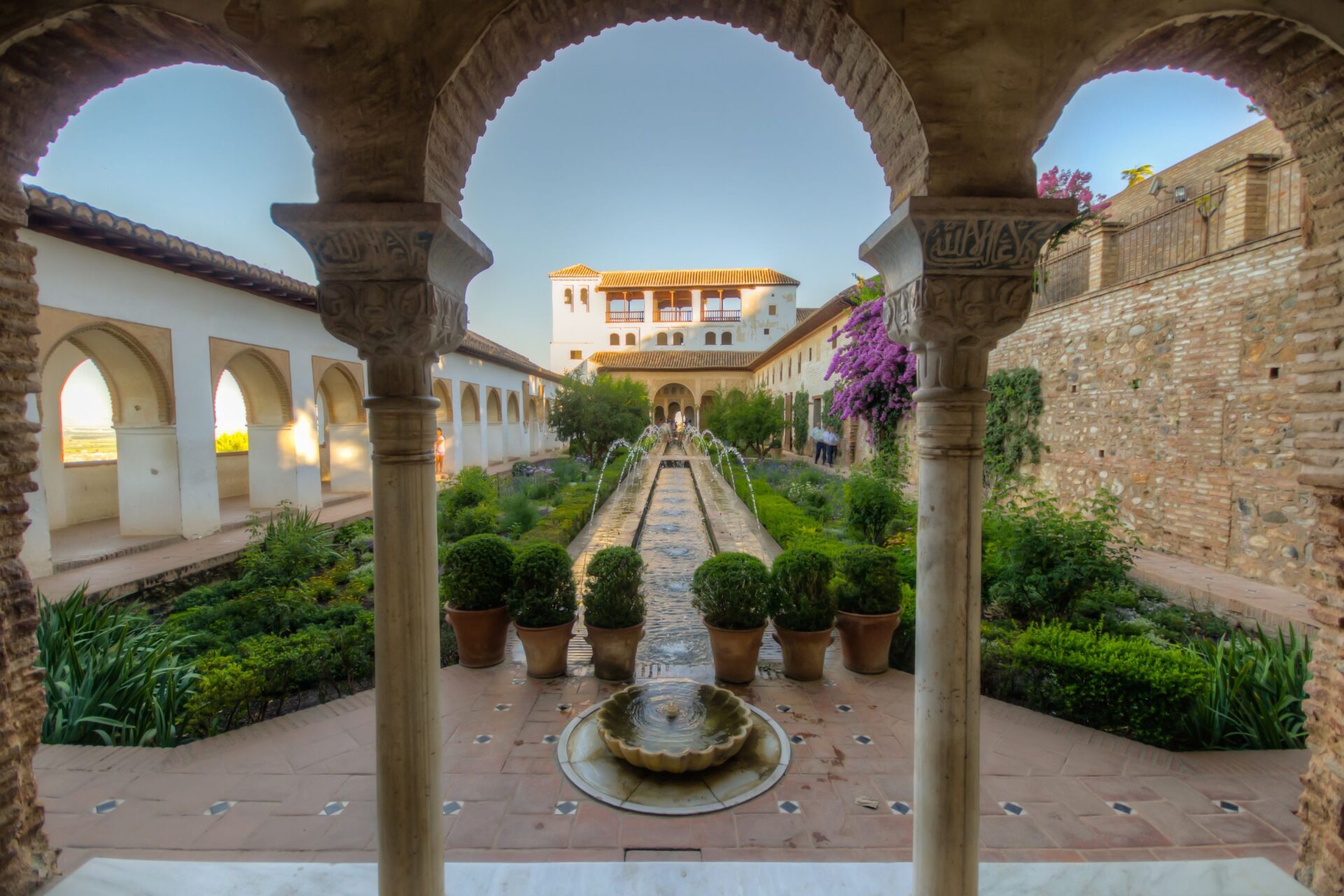
Inspiration From European Icons: Barcelona, Paris, London, and Beyond
Sometimes, Oviedo just feels like a smaller version of Europe’s big cities. When I stroll down its historic lanes, I can’t help but think of Barcelona’s playful mix of old and new.
You’ll spot art nouveau touches here and there, and honestly, they remind me of Gaudí’s wild designs in Park Güell. There’s even a hint of La Sagrada Familia’s ambitious spirit if you squint at the details.
Every now and then, Oviedo gives me that Paris vibe. Especially when locals gather around outdoor cafés in the shadow of the cathedral.
Sure, there’s no Eiffel Tower, but Oviedo still brings that air of simple sophistication. People here love good food, and you can feel it in the rhythm of daily life.
The parks aren’t huge—definitely not Central Park or anything—but they’re quiet and green. I love grabbing a book or just zoning out on a bench in the afternoon.
When I remember my trips to London and Rome, I think of wide, walkable streets and a sense of history at every turn. Oviedo fits right in with that crowd, even if it’s not as famous.
Its pedestrian zones and polished style make exploring a real pleasure. Sometimes, wandering here feels like stumbling onto a secret side street off Las Ramblas—unexpected, a bit quirky, and full of personality.

